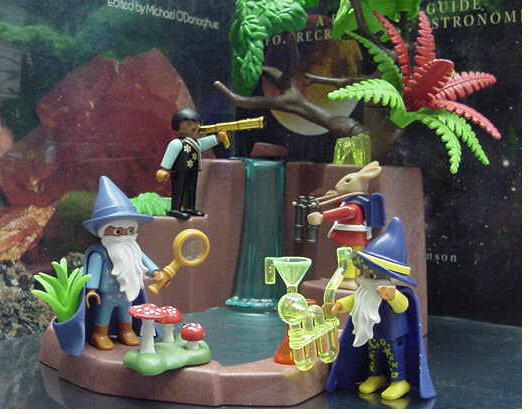 500 is Dewey-speak for science and mathematics. This section is straightforward, predictable, and mostly commonsensical.
500 is Dewey-speak for science and mathematics. This section is straightforward, predictable, and mostly commonsensical.
50x books about more than one basic science
51x math
52x astronomy
53x physics
54x chemistry
55x earth sciences
56x paleontology (dinosaurs go here!)
57x basic biology and microscopic life
58x plants (botany)
59x animals (zoology)
Did you get a science challenge ?
In subsequent years librarians changed the 500 numbers so that they would agree better with real science, and now human biology simply goes snuggly into 599.9.
Adult or teen? Have you read Natalie Angier's The Cannon: A Whirligig Tour of the Beautiful Basics of Science ? She is both a Pulitzer Prize winner and a Takoma Park author.
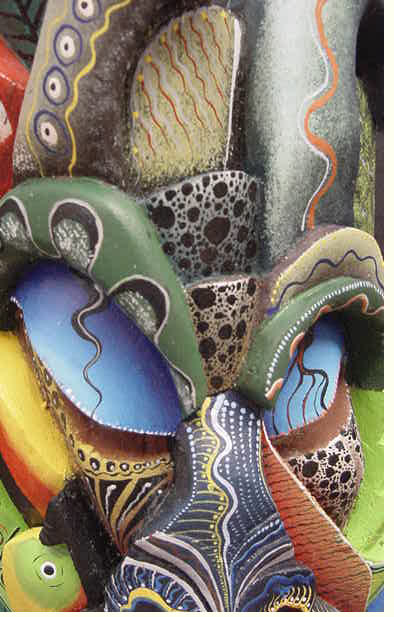 If you think poetry is boring, think again! We have all kinds of poetry books, including silly poetry books, serious poetry books and poetry books that will gross you out. We also have poetry books about all kinds of subjects, from basketball to planets to insects to underwear (yes, underwear!). We even have books that tell you how to write your own poems! Poetry can be found on our Children's Room shelves at J 811.
If you think poetry is boring, think again! We have all kinds of poetry books, including silly poetry books, serious poetry books and poetry books that will gross you out. We also have poetry books about all kinds of subjects, from basketball to planets to insects to underwear (yes, underwear!). We even have books that tell you how to write your own poems! Poetry can be found on our Children's Room shelves at J 811.
Here's are some poetry possibilities:
1. Falling Up by Shel Silverstein (or ANY poetry book by Shel Silverstein!)
2. Pieces of the Sun by Jack Prelutsky, our country's first-ever children's poet laureate
3. Good Sports by Jack Prelutsky, illustrated by Chris Raschka, who won the Caldecott Medal last year
4. Monster Goose by Judy Sierra: a book that takes nursery rhymes and makes them gross and silly
5. A Kick In the Head by Paul Janeczko: a book that introduces you to different poetry forms in a very fun way
6. Sad Underwear by Judith Viorst
7. The Way I Feel Sometimes by Beatrice de Regniers, a book that includes the wonderful poem, "The Mean Song"
8. Rim Shots: Basketball Pix, Rolls and Rhythms by Charles Smith Jr.
9. Diamond Life: Baseball Sights, Sounds and Swings by Charles Smith Jr.
10. Laugh-eteria by Douglas Florian
We've got lots more poetry: just ask us for more suggestions!
For adults, or anyone who uses the books on the adult side: The 800s are organized by the language of the literature. (More on this later.) The 810s are American literature, 820s English, 830s literature in Germanic languages, and so on. The 3rd digit usually tells you the form: 1=poetry 2=plays 3=fiction 4=essays and so on
And so American poetry in English is in 811, English-English poetry in 821, German poetry 831, French poetry 841, Italian poetry 851, Spanish poetry 861, Latin poetry 871, Greek poetry 881. And what about all the other languages in the world? They get squeezed into miscellaneous sections. So Germanic language literature that isn't actually in German (say Dutch, Norwegian, etc.) is all going to be shoe-horned into 839 somewhere. And what if the language isn't western Indo-European? All those other literatures and going to be found in the 890s.
Remember Dewey's world was late 19th century and Euro-centric. 90% of the literature numbers, the 800s, are saved for European languages. Dewey probably never thought much about poetry from the people who live in the rain forests. Nevertheless there are places saved for them. 895 is for the literatures of east and southwest Asia, 896 for African literatures and 898 for South American native literatures.
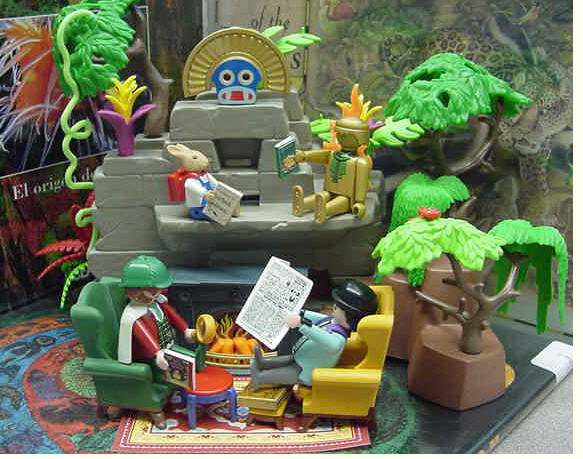
We've got lots of different mysteries in the Children's Room. They can be found quite easily on our fiction shelves: just look for the purple and white sticker showing a magnifying glass. These stickers are placed on the "spine" of the book, which is the part you can see as you scan the shelves. Mysteries include the "Nancy Drew" books by Carolyn Keene, the "Hardy Boys" books by Franklin Dixon and the "Bobbsey Twin" books by Laura Lee Hope. Don't forget about the "Encyclopedia Brown" series by Donald Sobol, in which each chapter is a different case solved by the boy detective. The solutions to the cases are found at the end of each book, but see if you can solve them by yourself first! For younger readers, we've got the "Cam Jansen" books by David Adler. Beginning readers might enjoy the "High Rise Private Eyes" series by Cynthia Rylant, found in our beginning reader bookcase. Author Doug Cushman has written and illustrated several humorous mysteries: The Mystery of the Monkey's Maze and The Mystery of King Karfu, which are both picture books, as well as several beginning reader mysteries:, Aunt Eater Loves a Mystery, Aunt Eater's Mystery Christmas, Aunt Eater's Mystery Vacation, and Inspector Hopper. And, of course, we've got some non-fiction books about mysteries. A particularly good one is Mysteries Of History by Robert Stewart (J 902 STEWART). Or try An Unsolved Mystery From History: The Mary Celeste by Jane Yolen (J PIC YOLEN).
On the adult side we have an entire mystery section, shelved between the SF books and the general fiction. The spine labels read M - followed by the first letters of the authors last name.
Summer Quest readers can chose to read something scary instead of a mystery book. For scary books, look for the purple and white ghost sticker that says "Horror/Suspense" on book spines. If you really like scary stories, you might enjoy More Short & Shivery by Robert San Souci (J 398.25 SANSOUC). Or if you like to be scared and to laugh at the same time, read Creepy Riddles by Katy Hall (J 818 HALL). The Boggart, a novel by Newbery Medalist Susan Cooper, is another great choice, as is Coraline, a novel by Neil Gaiman. For non-fiction scary books, try Ghosts of the Deep by Daniel Cohen (J 133.1 COHEN) or Mysterious Healing by Brian Innes (J 615.8 INNES). For more possibilities, ask a librarian!
On the adult side we don't have any special placement or stickers to help you find scary / horror fiction. You can look in the catalog for keywords such as ghost, vampire, and the like.
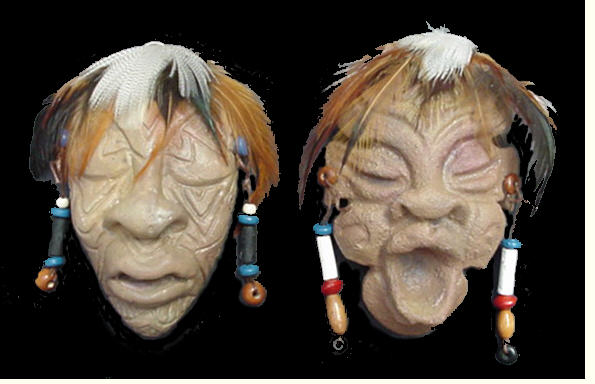 Afraid? Scared? Shy? (Ashamed of your hair?) Or did you get a Summer Quest challenge that tells you to read a book about feelings?
Afraid? Scared? Shy? (Ashamed of your hair?) Or did you get a Summer Quest challenge that tells you to read a book about feelings?
You can find some very good books by searching through the 150s, the Dewey section for psychology. And of course many, perhaps most, of the chapter books are not only about the characters' adventures but also about their feelings.
For kids, here is an excellent web site:
Dealing With Feelings
Adults and young adults: Try the books in Dewey 152 and the magazine Psychology Today. You may also find these psychology sites fun.
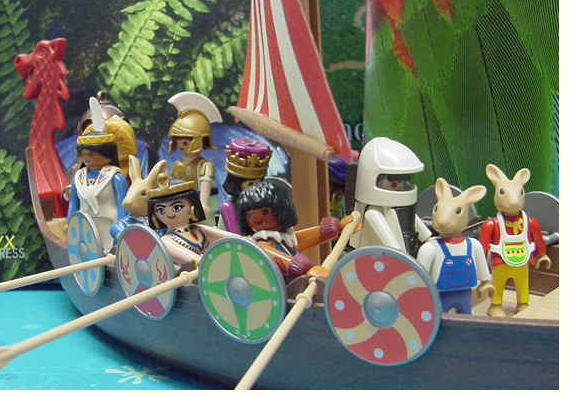
We picked adventure books as our first Summer Quest challenge because just about ANY kind of book can be an adventure book! We want our Summer Questers to get off to a great start, and reading an adventure book is a perfect way to do that.
So, what exactly IS an adventure book? It's probably easiest to give you some examples. The Captain Underpants books by Dav Pilkey are adventure books. So are the Junie B. Jones books by Barbara Park and The Magic Tree House books by Mary Pope Osborne. All of these books can be found on our two red "series" carts. Beginning readers might enjoy the "Henry and Mudge" books by Cynthia Rylant in the bookcase housing beginning reader books. For a non-fiction adventure book, try Guts by Gary Paulsen (find it on the shelves at J 813.54 PAULSEN). Or try Exploring Caves: Journeys Into the Earth by Nancy Aulenbach (find it at J 796.52 AULENBA). Then, of course, there's the expeditions to Mount Everest: try Within Reach: My Everest Story by Mark Pfetzer (find it at J 796.522 PFETZER).
For other possibilities, look on top of the first fiction shelf as you enter the Children's Room. Or ask a librarian!
Adults and older kids who use the adult section: the library is full of adventure books for you too. Everything from great classics (Roughing It, Two Years Before the Mast, The Three Musketeers) to recent accounts (The Perfect Storm, Into Thin Air) etc. etc.
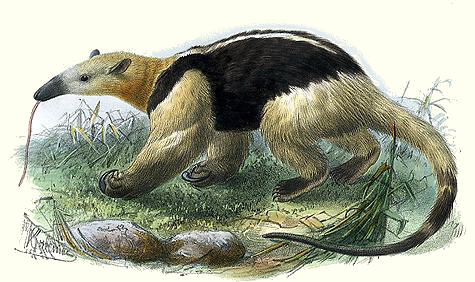
The tamandua (which means ant catcher in Tupi) has a starring role in this year's SummerQuest adventure.
In the rainforest, spotting animals is actually very difficult. You can hear them, you can see the signs of their passing, but seeing them is not easy. So we have an extra quest for you. In how many of our library reference books can you find mention of the tamandua? Extra credit if you see one, if you find a picture. List all the mentions you find in proper fashion - with Dewey number, title, page number and so on. We will have to figure out some way to resolve ties because we have only one prize and it is a fine one.
Hint: we have reference books in three locations: the reference room, the children's room and behind the desk.
You have until July 4th to finish, then we will start a new quest.
Where does the tamandua fit in the great kingdom of animals?
Kingdom: Animalia
Phylum: Chordata
Subphylum: Vertebrata
Class: Mammalia
Superorder: Xenarthra (1 2) Xenarthra means `Strange Jointed Mammals' and includes armadillos, anteaters and sloths. A lot of those great extinct giant mammals you see in museums were Xenarthra.
Order: Pilosa anteaters and sloths.
Suborder: Vermilingua anteaters
Family: Myrmecophagidae anteaters that aren't silky
Genus: Tamandua small anteaters that aren't silky
Species: tetradactyla (southern) and mexicana (northern)
And the Dewey?
5xx science
59x animals
599 mammals
599.3x miscellaneous orders of placental mammals
599.31 miscellaneous of the miscellaneous (pagolins, anteaters, aardvarks, ant bears etc.) Actually based on some old, and discredited, taxonomy. They are unrelated.
599.314 Myrmecophagidae
University of Michigan Animal Diversity Web: Northern Tamandua Southern Tamandua
 THE LIBRARY IS A DEPARTMENT OF THE CITY OF TAKOMA PARK
THE LIBRARY IS A DEPARTMENT OF THE CITY OF TAKOMA PARK